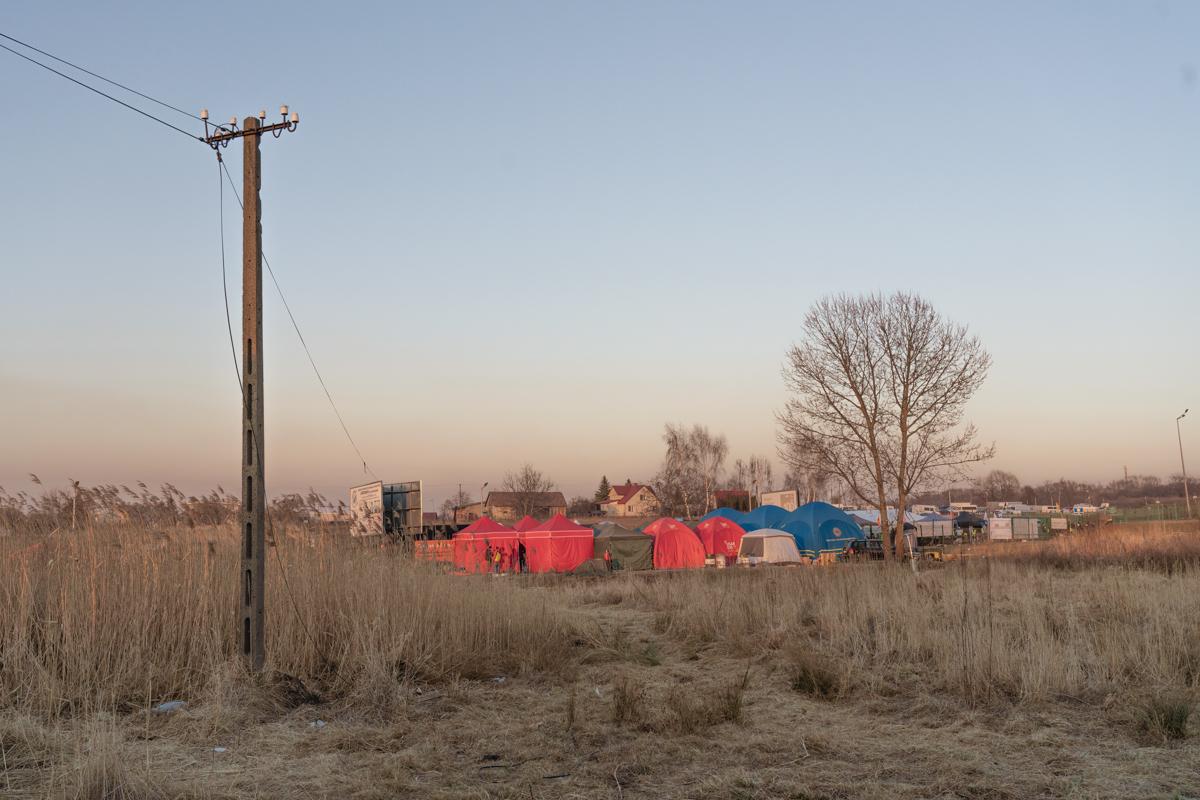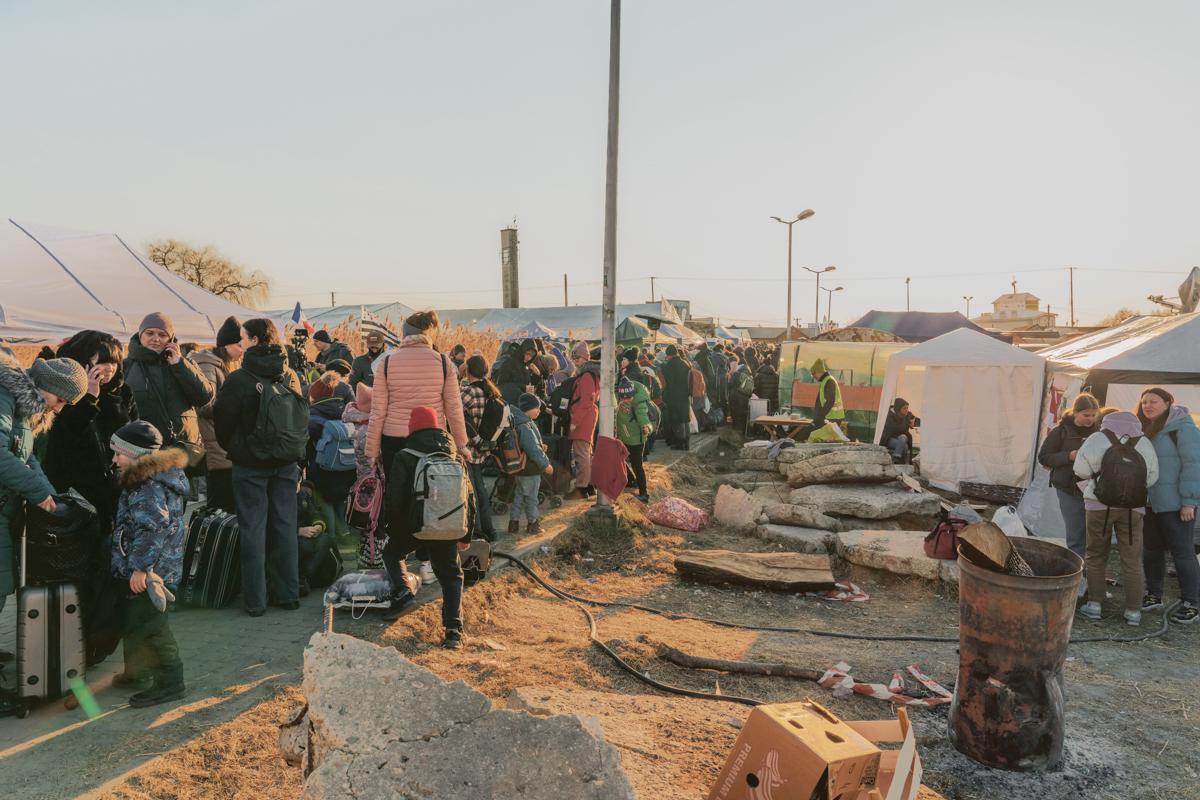Public Story
Roberto Marquez - Stories from the border
I look around and see people handing out clothes, milk, biscuits, hot soup, cartons of juice, piles of toys, headache and cough tablets, bandages, and plasters. The workers keep the line moving and engage with the children, while offering drinks and food trays to everyone: they’re warming, compassionate and enthusiastic. If anyone declines, they try again. The journey to Medyka is an arduous one, and the relief of finally being in a safe haven is only temporary; it is quickly replaced by the vacant look of the refugees, who were thrust so suddenly into such a dire and unforeseen situation. Some people even break ranks and walk back to the other side of the border: they are workers, soldiers called back to the battlefield, or refugees looking for missing relatives. Outside the camp, the village church is just meters away, but it feels like it’s a different world. The sun is high above our heads as the bells toll eleven times, signaling the start of the function.
Roberto Marquez, born in Mexico, is sixty years old. Like many artists, he has travelled to the border to do his part. He walks around the camp carrying a thick sheet of plywood, a Ukrainian flag hanging off the side. He is not wearing a yellow vest like the other staff members; a black cowboy hat is his distinguishing feature. He’s scanning the area for the right place to start his work of art: he is on the lookout for a bright spot where he will be easily seen, but not in the way. When he was just fourteen, he too emigrated to seek his fortune, by illegally crossing the border between Mexico and the United States. Three years ago, he left his family business in Dallas to travel the world and dedicate his life to art. He sets up the canvass among the reeds and bundles of dry grass, then he takes a paint roller and gives the wood a coat of white paint. He is about to create a mural inspired by Picasso’s Guernica. He has always strived to devote himself to a cause, to find something worth immortalizing. His paintbrush is wedged into a notch of the thick leather belt looped around his back. He has finally found a place and a reason for his art, right here and now, before the eyes of hundreds of people fleeing from war.
“If I had painted something original, the message would not be as clear.” He explains that evening, sitting by the fire. “Guernica is engrained in popular imagination, so everyone that sees my piece will make the connection to the events Picasso painted.” Roberto plans to travel to Kiev after the war, to create the last of the three artworks that will make for a symbolical connection between people and nations."
At night, as the temperature drops below freezing, the camp is soon blanketed in darkness. Its residents withstand the intense cold by lighting bonfires inside tin barrels; the children gather around the fire to warm their hands and faces. As they play with the long shadows cast on the bare ground, others find shelter inside the tents, or under the artificial light of infrared lamps. Alas, the Medyka camp is not suitable for sleeping; almost everyone but the volunteer workers will look for a different place to spend the night.
The outgoing buses are headed to Przemyśl: many refugees will reunite with their friends or relatives in Cracow, Warsaw, or other European cities, while those staying behind will look for temporary housing in decommissioned factories or repurposed schools and supermarkets.
At night, everything slows down: the line of refugees at the gate, the volunteer workers welcoming them, even the sounds become duller. The blinking lights of the Policja cars cast an eerie, bluish aura on the slumbering village.




















